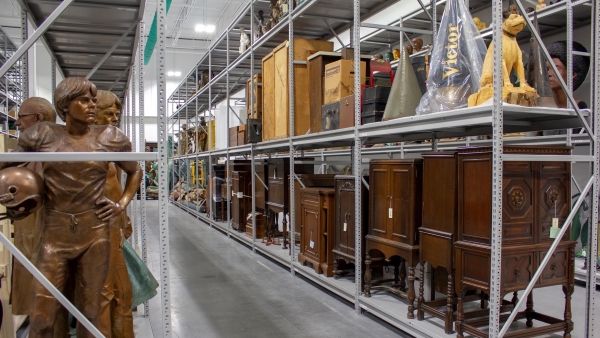For historical preservation, climate is key
Over the last century, average temperatures in Delaware have been steadily rising, while nights are staying warmer for longer, and frosts arrive later in the spring and fall. While sea level rise, flooding, more intense storms and more extreme heat threaten communities across the state, climate change also poses a unique challenge for preserving the First State’s history.
Longer stretches of hot days, which often mean lingering humid conditions, pose unique challenges for some of the state’s historic buildings. That’s why the Division of Historical and Cultural Affairs is planning to install and upgrade to more energy-efficient air conditioning systems at the Academy building near the New Castle County Court House Museum as well as the Biggs Museum of American Art in Dover.
“Especially in areas with a lot of masonry buildings, the problem is rising humidity and dew points, which stays in the building walls,” said Courtney Lynahan, the Division’s curator of historic structures. “Over time that’s going to cause problems. … There are all of these different factors, globally, impacting these historic buildings. This is a way for us to figure out how to best do it while also keeping the building safe.”
From peeling paint to suffering staff to mildewy historical items, preservationists are studying ways to combat the challenges that come with a changing climate.
“To keep things for a long time, you need to keep them in particular conditions,” explained Meg Hutchins, the Division’s engagement and collections manager. “With steady temperature and steady relative humidity, hopefully we can slow the deterioration of anything and keep it for longer. Our job is to hold, in public trust, the items of our past.”
At the Center for Material Culture, the Division’s newest building that houses a majority of the state’s historic collections, environmental controls allow curators to ensure particular conditions are in place so that a variety of items, from fabrics to items from shipwrecks to paintings and Victrolas, are carefully preserved.

“To do that, we have to make sure we’re doing our best to build the environment and keep the environment that these important items are kept in at the best situation we possibly can,” Hutchins said.
Unfortunately, though, the historical methods of keeping a building cool – lots of shade from trees, closing the shutters, allowing for cross-breezes or opening doors aren’t always feasible any more, Lynahan said.
Installing air conditioning at the Academy, which is owned by the Division but utilized by the Immanuel Episcopal Church, will allow the church to use it year-round instead of just fall through spring. Built at the turn of the 19th century, the building originally served as a school and for decades has provided space for the church to use as a fellowship hall, nursery and for choir practice.
Meanwhile, at the Biggs Museum, it’s critically important to the collections housed there that moisture and humidity are controlled. Upgrades to the system will allow experts to accurately and precisely control and monitor temperature levels.
“With their collections, which include historic examples of material culture, art and sculpture, having an effective and working system that can accommodate the various needs of the items is imperative for conservation,” Lynahan said. “The consideration of how humidity and outside heat impacts historic buildings, and ensuring that systems are designed to be as minimally invasive as possible and also for the specific size and function of the building, is going to create a cooling system that will be efficient and functional.”
The systems for both buildings are currently in the final stages of design, with installation currently slated for 2023.


